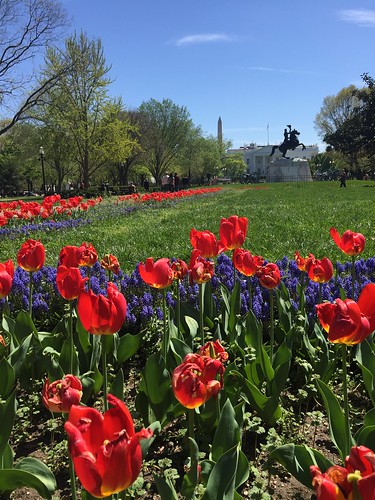Ament tension may have been also simplistic. An additional uniquely D mechanism PubMed ID:https://www.ncbi.nlm.nih.gov/pubmed/21987077 of scroll wave instability entails the high wavefront curvature resulting from the twisting of fibre rotation across the ventricular wall. Fenton and Karma described how phase shifts of spiral wave rotation across the wall can lead to substantial transmural gradients of transmembrane possible resulting in twistons that propagate along the filament and from time to time break off forming new filaments. Filament analyses have also been performed (1R,2R,6R)-DHMEQ custom synthesis making use of complete heart geometries, by way of example On the other hand, though A-196 manufacturer detailed quantification of global metrics has been performed at the complete heart level, as far as we’re conscious, really little data is out there on filament dynamics in simulations making use of physiological cell models and realistic heart geometries and none with detailed heart structure. By way of example, ten Tusscher et alquantified the amount of filaments in various computational models of mammalian VF. Their operate supports the theory that VF within the human heart is a lot more closely associated to VF within the rabbit heart, when it comes to spatial organisation, than other big mammals (e.g dogpig) . Clayton presents a detailed analysis on how many metrics (like quantity of filaments, lifetimes, number of births, deaths, and divisions) are affected by membrane kinetics and geometry. Arevalo et al. and Trayanova et al. present postshock filament distributions, and some filament dynamics are described, though not in detail. All of the above research use representations in the heart that usually do not incorporate finescale structure. Bishop et al. have created a highresolution, anatomically detailed computational model in the rabbit heart that involves structures for example huge intramural vessels, papillary muscle tissues, and trabeculae. Bishop and Plank then studied the part of this structure in rabbit ventricular tachycardia (VT) and fibrillation, with complete analyses employing metrics like number of surface PSs, quantity of filaments, and spatial distribution of cumulative filament count. They conclude that structure has tiny effect on rabbit arrhythmia maintenance, although this really is in contradiction to some experimental findings with larger mammals .BioMed Study International As far as we’re conscious, there has in no way been a detailed presentation of filament dynamics in entire heart simulations with very anatomically detailed computation meshes. Within this paper, we present a model of VF composed of a novel cellular model and the Bishop et al. anatomically detailed mesh on the rabbit heart and fill this  gap inside the research literature by describing various filament dynamics throughout simulated VF. Where proper, we show the corresponding surface patterns, and in particular we will see that the activity in the interior in the heart might be much more complex than what could be assumed provided the surface patterns alone. of APD; this approach is similar in philosophy (but not implementation) to other folks who’ve adjusted each cell model dynamics andor conductivities as described above and has the positive aspects of realistic wavefront dynamics. Like preceding operate, our simulated VF exhibits a shorter wavelength than that observed experimentally (see Section), but we think this doesn’t have an effect on the overall inferences of this paper, as discussed in Section . Spatiotemporal electrophysiological activity within the entire heart is often modelled working with the bidomain equations two partial differential equat
gap inside the research literature by describing various filament dynamics throughout simulated VF. Where proper, we show the corresponding surface patterns, and in particular we will see that the activity in the interior in the heart might be much more complex than what could be assumed provided the surface patterns alone. of APD; this approach is similar in philosophy (but not implementation) to other folks who’ve adjusted each cell model dynamics andor conductivities as described above and has the positive aspects of realistic wavefront dynamics. Like preceding operate, our simulated VF exhibits a shorter wavelength than that observed experimentally (see Section), but we think this doesn’t have an effect on the overall inferences of this paper, as discussed in Section . Spatiotemporal electrophysiological activity within the entire heart is often modelled working with the bidomain equations two partial differential equat
ions (PDEs) coupled to.Ament tension may have been too simplistic. An additional uniquely D mechanism PubMed ID:https://www.ncbi.nlm.nih.gov/pubmed/21987077 of scroll wave instability requires the higher wavefront curvature resulting from the twisting of fibre rotation across the ventricular wall. Fenton and Karma described how phase shifts of spiral wave rotation across the wall can lead to substantial transmural gradients of transmembrane prospective resulting in twistons that propagate along the filament and often break off forming new filaments. Filament analyses have also been performed utilizing whole heart geometries, one example is Nevertheless, although detailed quantification of international metrics has been performed at the complete heart level, as far as we are aware, very little data is readily available on filament dynamics in simulations applying physiological cell models and realistic heart geometries and none with detailed heart structure. As an example, ten Tusscher et alquantified the amount of filaments in several computational models of mammalian VF. Their work supports the theory that VF in the human heart is more closely connected to VF within the rabbit heart, with regards to spatial organisation, than other massive mammals (e.g dogpig) . Clayton presents a detailed analysis on how various metrics (like quantity of filaments, lifetimes, variety of births, deaths, and divisions) are affected by membrane kinetics and geometry. Arevalo et al. and Trayanova et al. present postshock filament distributions, and some filament dynamics are described, even though not in detail. All the above studies use representations on the heart that don’t consist of finescale structure. Bishop et al. have developed a highresolution, anatomically detailed computational model on the rabbit heart that includes structures including large intramural vessels, papillary muscle tissues, and trabeculae. Bishop and Plank then studied the part of this structure in rabbit ventricular tachycardia (VT) and fibrillation, with complete analyses applying metrics such as number of surface PSs, quantity of filaments, and spatial distribution of cumulative filament count. They conclude that structure has little effect on rabbit arrhythmia maintenance, even though this really is in contradiction to some experimental findings with larger mammals .BioMed Analysis International As far as we’re aware, there has by no means been a detailed presentation of filament dynamics in entire heart simulations with very anatomically detailed computation meshes. In this paper, we present a model of VF composed of a novel cellular model plus the Bishop et al. anatomically detailed mesh on the rabbit  heart and fill this gap within the research literature by describing numerous filament dynamics for the duration of simulated VF. Exactly where proper, we show the corresponding surface patterns, and in specific we will see that the activity in the interior of the heart might be much more complex than what would be assumed offered the surface patterns alone. of APD; this approach is similar in philosophy (but not implementation) to other people who have adjusted both cell model dynamics andor conductivities as described above and has the advantages of realistic wavefront dynamics. Like earlier work, our simulated VF exhibits a shorter wavelength than that observed experimentally (see Section), but we think this doesn’t impact the overall inferences of this paper, as discussed in Section . Spatiotemporal electrophysiological activity within the whole heart can be modelled making use of the bidomain equations two partial differential equat
heart and fill this gap within the research literature by describing numerous filament dynamics for the duration of simulated VF. Exactly where proper, we show the corresponding surface patterns, and in specific we will see that the activity in the interior of the heart might be much more complex than what would be assumed offered the surface patterns alone. of APD; this approach is similar in philosophy (but not implementation) to other people who have adjusted both cell model dynamics andor conductivities as described above and has the advantages of realistic wavefront dynamics. Like earlier work, our simulated VF exhibits a shorter wavelength than that observed experimentally (see Section), but we think this doesn’t impact the overall inferences of this paper, as discussed in Section . Spatiotemporal electrophysiological activity within the whole heart can be modelled making use of the bidomain equations two partial differential equat
ions (PDEs) coupled to.